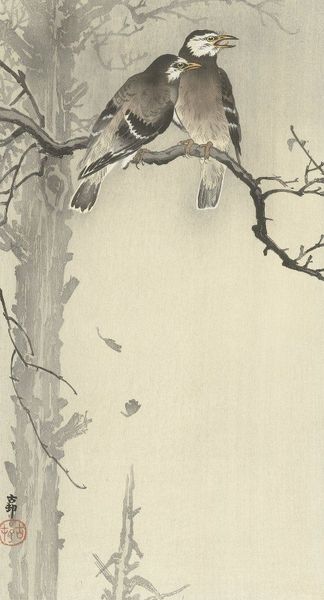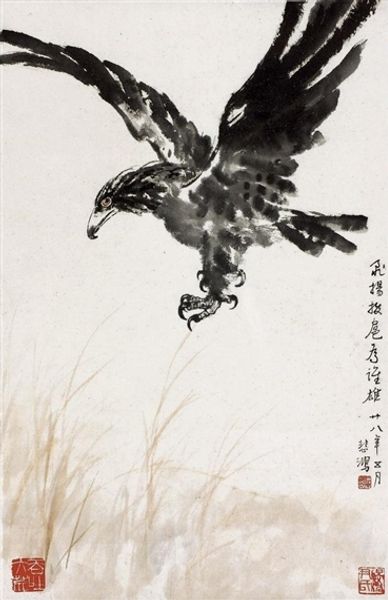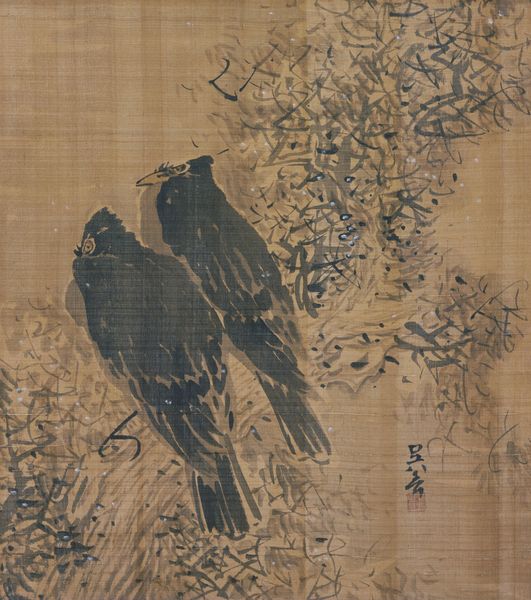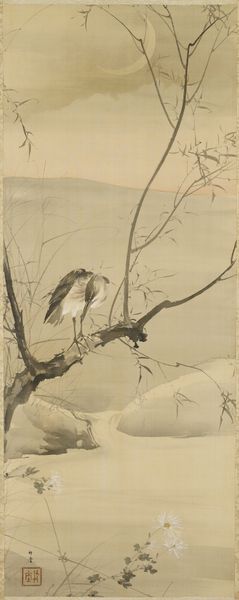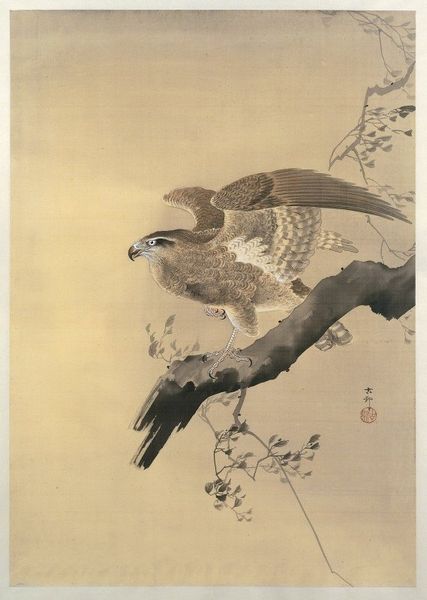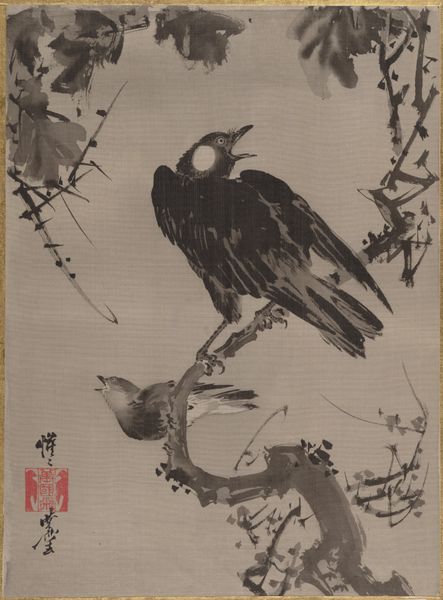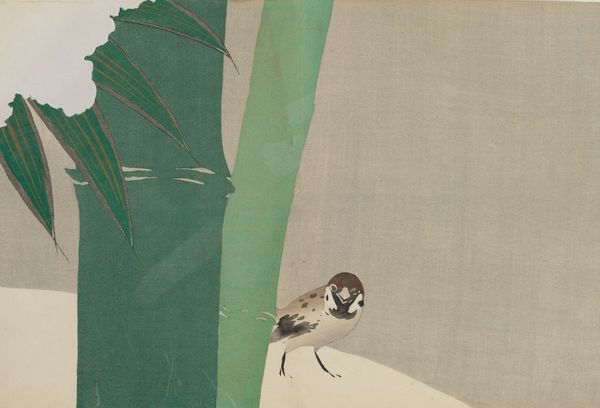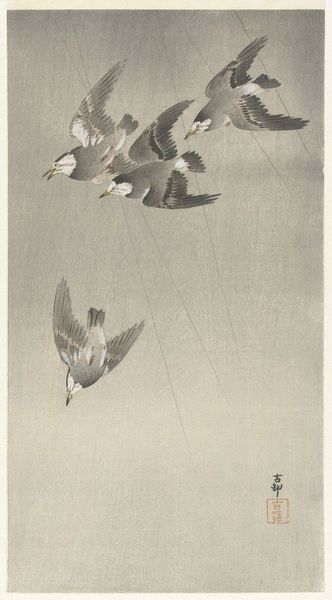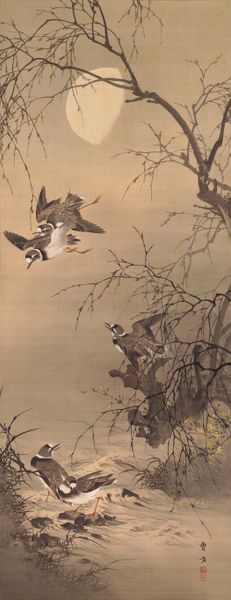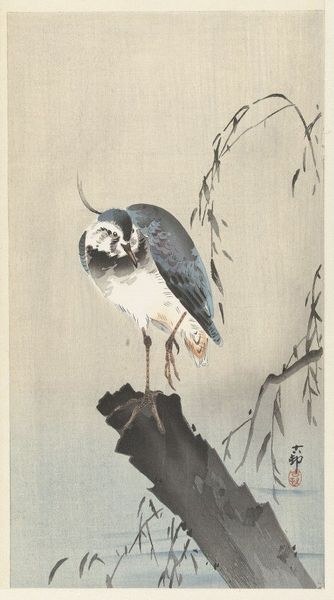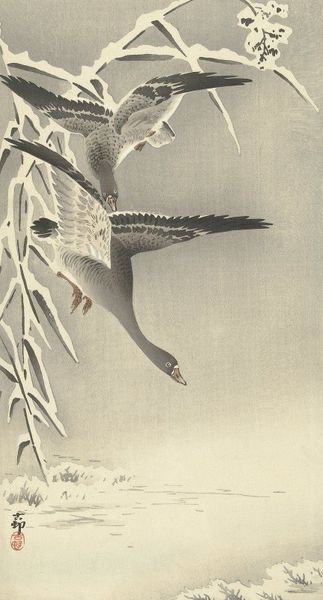
Copyright: Public Domain: Artvee
Editor: This is Ohara Koson's "White-tailed Eagle on Branch," a watercolor created sometime between 1900 and 1930. There's something quite stark and beautiful about it; the texture of the eagle's feathers contrasts with the smooth, pale background. What stands out to you? Curator: Immediately, I consider the materiality of watercolor – its accessibility meant works like this could reach a broader audience. Also, the 'floating world' aesthetic connects to the rise of a merchant class and their consumption of art. The starkness you mention highlights not just beauty, but perhaps a commentary on resource scarcity reflected through artistic production during a time of shifting socio-economic realities. The artist makes an explicit statement about process here. Editor: Resource scarcity? I hadn’t considered that. The bird seems so majestic. How does the production method – watercolor, in this case – impact how we read the majestic qualities of the work? Curator: The use of watercolor here allows for a quick, replicable process, enabling mass production, bringing this symbol of power – the eagle – into ordinary homes. Mass consumption democratizes a subject once associated with nobility, disrupting traditional social hierarchies. Don't you think this impacts how we perceive that majesty? Editor: That’s fascinating. So, the choice of watercolor, in this case, transforms the eagle from a symbol of elite power to something more…accessible, something tied to everyday life. I’ll definitely look at watercolor differently now. Curator: Exactly! Analyzing art through the lens of materials reveals how art becomes embedded in socio-economic systems.
Comments
No comments
Be the first to comment and join the conversation on the ultimate creative platform.
